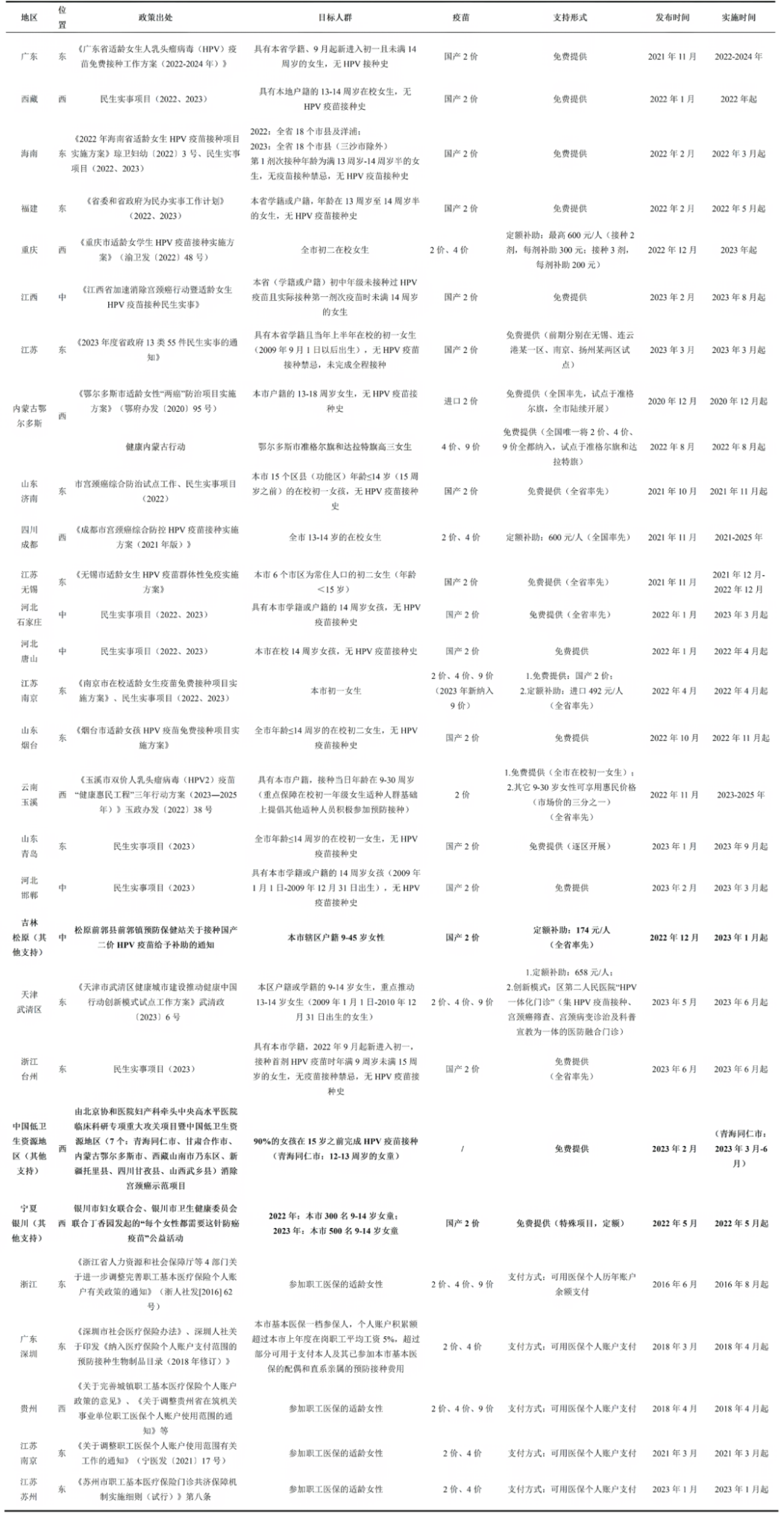Global evidence
International studies indicates that the main reasons for not taking vaccines include a lack of awareness about immunization, fear of side effects, negative attitudes, child illness at the time of vaccination, insufficient vaccine supply, long distances to vaccination sites, complicated vaccination procedures, remoteness from health facilities, misunderstandings about contraindications, and restrictions related to religious and cultural practices.1 The main reasons for incomplete vaccination include missed appointment, lack of knowledge about immunization, shortage of healthcare personnel, unclear information regarding vaccination locations, deferring to the next round of vaccination, concern about vaccine side effects, busy mothers, long waiting times, children falling ill during vaccination, distance to vaccination sites being too far, unclear timing for the second or third dose, and poor attitudes of medical staff.2
China evidence
There are limited studies in China on the factors affecting willingness and behavior related to PCV vaccination. A meta-analysis of 22 cross-sectional studies reported a relatively low willingness among Chinese residents to receive pneumococcal vaccination, with an estimated willingness rate of 49% (95% CI: 36%–62%) , and that willingness to vaccinate directly affected the vaccination rate.3 Subgroup analysis revealed disparities in vaccination willingness based on gender, target population, education level, city tier classification, and chronic disease status. Women showed slightly higher willingness than men; parents of infants and young children were more willing to vaccinate compared to older adults; and individuals with higher education levels and those residing in first-tier or new first-tier cities showed greater willingness to receive pneumococcal vaccination (Table 1) 3
Table 1 Meta-analysis results of Chinese residents’ willingness to receive PCVs
| PublishYears | City | Research Target | Sample size | Vaccination willingness(%) | Vaccination willingness(95%CI) | Age(years) |
| 2019 | Shanghai (Tier 1) | Parents of infants and young children | 354 | 37.9 | 0.38 (0.33~0.43) | 25.3±3.8 * |
| 2020 | Guangzhou (Tier 1) | Parents of infants and young children | 316 | 59.2 | 0.59 (0.54~0.65) | 24.6±2.9 |
| 2020 | Anyang (Tier 4) | Parents of infants and young children | 808 | 89.1 | 0.89 (0.87~0.91) | – |
| 2016 | Shanghai (Tier 1) | Elders | 560 | 55.9 | 0.56 (0.52~0.60) | ≥60 |
| 2015 | Shanghai (Tier 1) | Elders | 428 | 42.1 | 0.42 (0.37~0.47) | ≥60 |
| 2018 | Beijing (Tier 1) | Elders | 1007 | 86.9 | 0.87 (0.85~0.89) | ≥65 |
| 2015 | Shanghai (Tier 1) | Elders | 500 | 53.8 | 0.54 (0.49~0.58) | ≥60 |
| 2010 | Foshan (New Tier 1) | Elders | 210 | 44.8 | 0.45 (0.38~0.51) | ≥60 |
| 2016 | Xi’an (New Tier 1) | Elders | 600 | 17.3 | 0.17 (0.14~0.20) | ≥60 |
| 2019 | Ningbo (Tier 2) | Elders | 568 | 32.9 | 0.33 (0.29~0.37) | ≥65 |
| 2015 | Shanghai (Tier 1) | Elders | 3569 | 35.9 | 0.36 (0.34~0.38) | ≥60 |
| 2016 | Guangzhou (Tier 1) | Elders | 252 | 67.5 | 0.67 (0.62~0.73) | ≥60 |
| 2016 | Shanghai (Tier 1) | Elders | 1393 | 45.2 | 0.45 (0.43~0.48) | ≥60 |
| 2018 | Pingliang (Tier 5) | Elders | 556 | 39 | 0.39 (0.35~0.43) | ≥60 |
| 2019 | Shanghai (Tier 1) | Elders | 800 | 70.8 | 0.71 (0.68~0.74) | ≥60 |
| 2017 | Shanghai (Tier 1) | Elders | 493 | 53.5 | 0.54 (0.49~0.58) | ≥60 |
| 2020 | Changzhou (Tier 2) | Elders | 1354 | 3.5 | 0.03 (0.02~0.04) | – |
| 2019 | Shenzhen (Tier 1) | Elders | 225 | 67.6 | 0.68 (0.61~0.74) | ≥65 |
| 2015 | Shanghai (Tier 1) | Elders | 902 | 63.1 | 0.63 (0.60~0.66) | ≥60 |
| 2014 | Shangrao (Tier 3) | Elders | 214 | 40.2 | 0.40 (0.34~0.47) | ≥60 |
| 2017 | Shanghai (Tier 1) | Elders | 1101 | 53.3 | 0.53 (0.50~0.56) | ≥60 |
| 2014 | Beijing (Tier 1) | Elders | 2926 | 21.8 | 0.22 (0.20~0.23) | ≥60 |
*:Mean ± standard deviation
Vaccination Willingness of Young Children’s Parents and the Influencing Factors
For non-NIP (National Immunization Program) vaccines, cost is an important factor affecting vaccination willingness.4 When parents believe that the vaccine has a good effect in preventing diseases or perceive that their children are at higher risk of infection or more severe disease, they are more likely to pay a higher price for vaccination.4 The willingness to pay for vaccination decreases with age, fathers and paternal grandparents showing higher willingness to pay than mothers.4 At the same time, different vaccine policies affect parents’ willingness to vaccinate their children. Providing free vaccines can significantly increase parents’ willingness to vaccinate their children.5
A study published in 2013 on the non-NIP vaccination rate and influencing factors for urban and rural children aged 1 to 6 years in Chongqing showed that the vaccination rate of PCV7 and PCV23 in rural children was significantly lower than that in urban children.6 Another study on the vaccination status of PCV7 in Ningbo found that the vaccination rate was affected by region, gender, hukou (household registration status), and year of birth, with urban areas higher than rural areas, permanent residents higher than migrant children, and boys higher than girls.7 In addition, the later the year of birth, the younger the child at the time of the first dose, the more doses they eventually received.7
A survey conducted in Shanghai on the vaccine hesitancy among parents of children under 5 regarding PCV13 vaccination found that 48.8% of parents reported that their children had been vaccinated with PCV13, and 26.73% of parents planned to vaccinate their children with PCV13 in the future.8 The main reasons for not vaccinating PCV13 include concerns about adverse effects (26.7%), children having aged out of eligibility (23.3%), and the belief that the vaccine is not needed (14.9%). The study suggests that health interventions, reducing vaccine prices and optimizing vaccination strategies can reduce vaccine hesitancy and increase willingness to vaccinate.8
A survey study on the willingness to vaccinate and pay for PCV13 conducted in Guilin, Guangxi Province in 2022 showed that only 39.07% of caregivers had heard of or were aware of PCV13, with 71.69% having the willingness, 20.26% reporting hesitation, and 8.05% refusing vaccination.9 In terms of willingness to pay, 48.40% of caregivers were willing to pay the full price of the vaccine, and 41.37% accepted partial payment. Demographic characteristics, socio-psychological background, and attitudes towards vaccines are all related to vaccination willingness, and there were differences in influencing factors between hesitant and refusing caregivers. In addition, there is a high demand for PCV13 vaccination among local children, and the method of partial payment is widely accepted by caregivers. To reduce vaccine hesitancy, the study emphasizes the importance of strengthening publicity and education, as well as creating a supportive social environment.9
Vaccination Willingness of the Elderly and the Influencing Factors
A systematic review published in 2022 on the vaccination rate, willingness to vaccinate, and influencing factors of PPV 23 for the elderly in China showed that the vaccination rate among the elderly is generally low, ranging from 1.23% to 42.10%.10 Factors such as comorbid chronic diseases, perceptions, knowledge, and attitudes towards pneumonia and PPV 23, education level, socio-economic disparities, health education, and local immunization policies are closely associated with willingness to receive PPV23. It is recommended to implement government funding and subsidies, include PPV23 in the national health insurance, or encourage healthcare providers actively promotion the PPV 23 and the related policies.10
A survey conducted in Zhengzhou on the vaccination status of the elderly with PCV 23 found that low education level, older age, and skepticism about the effectiveness of pneumonia vaccines are important factors affecting the vaccination rate.11 In addition, a survey study on the willingness to vaccinate among the elderly diabetic patients with influenza and pneumonia vaccines found that younger age groups (65-69 and 70-74 years old), diabetes complications, perceived effectiveness and safety of vaccination, and recommendations from medical personnel are protective factors for promoting vaccination among elderly diabetic patients; while smoking is a risk factor for vaccination.12 Lu et al.’s survey on the willingness and behavior of influenza, pneumonia, and herpes zoster vaccine’s vaccination among people aged 50-69 found that accessibility of vaccination services, willingness to vaccinate, vaccine price sensitivity, and history of underlying diseases significantly affect the vaccination rate, while knowledge of relevant diseases and vaccine hesitancy indirectly influence vaccination behavior.13
A survey study on the influencing factors of healthcare providers’ recommendation of PPV 23 and PPV23 vaccination coverage among elderly and patients with chronic diseases found that, among 1,138 healthcare workers, 46.75% often recommended PPV 23 to the target group, with public health workers being more likely to recommend the vaccine than the general practitioners.14 The vaccination rate of PPV23 among chronic disease patients under 65 years old is 3.29%; among the elderly without chronic diseases, the rate is 6.69%; and among chronic disease patients aged 65 and above, the rate is 8.87%.14 Multivariate logistic regression analysis showed that only the recommendation from general practitioners were significantly associated with an increase in PPV 23 coverage rate. The study suggests targeted training on PPV23 for general practitioners to implement effective health promotion in clinical practice and improve the coverage rate of PPV 23 vaccination.14
Content Editor: Menglu Jiang, Ziqi Liu
Page Editor: Ziqi Liu
References
- Anderson, E. L. . (2014). Recommended solutions to the barriers to immunization in children and adults. Missouri Medicine, 111(4), 344.
- Eshete, A., Shewasinad, S., & Hailemeskel, S. (2020). Immunization coverage and its determinant factors among children aged 12–23 months in Ethiopia: A systematic review, and meta- analysis of cross-sectional studies. BMC Pediatrics, 20(1). https://doi.org/10.1186/s12887-020-02163-0
- Zhu, L., Gao, J., Bai, D., & Chen, X. (2021). A meta-analysis of pneumococcal vaccination willingness among Chinese residents. Preventive Medicine, 33(9), 6.
- Hou, Z., Jie Chang, Yue, D., Fang, H., Meng, Q., & Zhang, Y. (2014). Determinants of willingness to pay for self-paid vaccines in China. Vaccine, 32(35), 4471–4477. https://doi.org/10.1016/j.vaccine.2014.06.047
- Zeng, Y., Yuan, Z., Yin, J., Han, Y., Chu, C.-I., & Fang, Y. (2019b). Factors affecting parental intention to vaccinate kindergarten children against influenza: A cross-sectional survey in China. Vaccine, 37(11), 1449–1456. https://doi.org/10.1016/j.vaccine.2019.01.071
- Jiang, Y., Yin, H., Shi, Y., Yuan, Y., Cao, W., Zeng, Q., et al. (2013). Coverage and influencing factors of category II vaccine among rural and urban children aged 1–6 years in Chongqing, China. Chinese Journal of Health Education, 29(7), 4.
- Zhou, S., Xu, G., Fang, T., & Ma, R. (2014). Analysis of 7-valent pneumococcal conjugate vaccine (PCV7) coverage among children. Zhejiang Journal of Preventive Medicine, 26(2), 4.
- Ni, Y. H., Xu, Z. H., & Wang, J. (2023). Understanding vaccine hesitancy with PCV13 in children: Results of a survey in Shanghai, China. PloS one, 18(4), e0284810. https://doi.org/10.1371/journal.pone.0284810
- Li, L., Ma, Y., Li, W., Tang, G., Jiang, Y., Li, H., Jiang, S., Zhou, Y., Yang, Y., Zhang, T., Yang, W., Ma, L., & Feng, L. (2022). Caregiver Willingness to Vaccinate Children with Pneumococcal Vaccines and to Pay in a Low-Resource Setting in China: A Cross-Sectional Study. Vaccines, 10(11), 1897. https://doi.org/10.3390/vaccines10111897
- Yunhua, B., Peng, B., Shuping, L., & Zheng, Z. (2022). A narrative review on vaccination rate and factors associated with the willingness to receive pneumococcal vaccine in Chinese adult population. Human vaccines & immunotherapeutics, 18(6), 2139123. https://doi.org/10.1080/21645515.2022.2139123
- Li, L. (2019). Investigation on 23-valent pneumococcal polysaccharide vaccine coverage among elderly in Zhengzhou High-tech Zone. Henan Journal of Preventive Medicine, 30(3), 182–183, 198.
- Yang, Y., Gao, Y., & Song, Y. (2019). Analysis of factors influencing influenza and pneumococcal vaccination willingness among 225 elderly diabetic patients in Luohu District. Chinese Journal of Nursing, 26(15), 55–59.
- Lu X, Lu J, Zhang L, et al. Gap between willingness and behavior in the vaccination against influenza, pneumonia, and herpes zoster among Chinese aged 50-69 years. Expert Rev Vaccines. 2021 Jul 21:1-6.
- Lai, X., Lyu, Y., Zhang, H., Feng, H., & Fang, H. (2022). PPSV-23 recommendation and vaccination coverage in China: a cross-sectional survey among healthcare workers, older adults and chronic disease patients. Expert review of vaccines, 21(9), 1343–1353. https://doi.org/10.1080/14760584.2022.2110074





